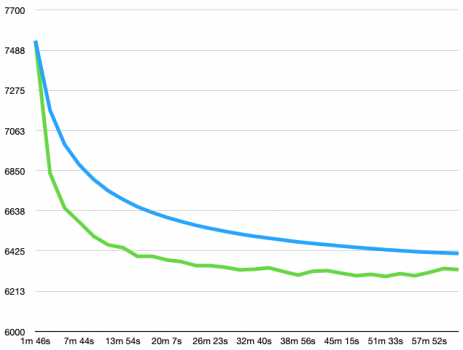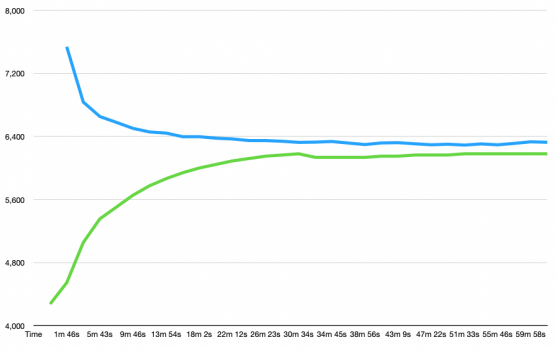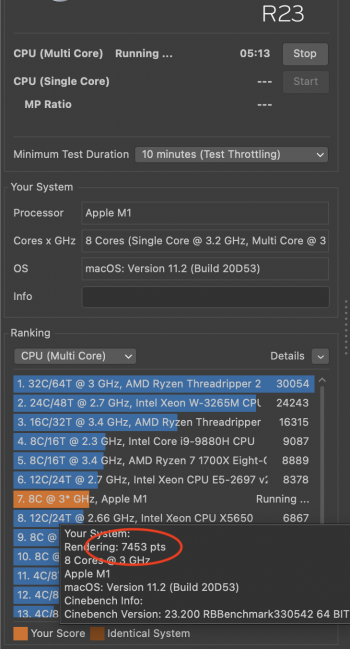Great results juicy.
For a very quick ad-hoc test of my franken-cooler, I ran Cinebench r23 while on a Teams call (I have to work for pay for these crazy hobbies), with some office apps, preview, safari and chrome open. The performance after 10 minutes was 7155 although with all that other stuff going on we cant trust that score. However, I did this to drive CPU heat up as high as I could get it.
It topped out at 98C and two cores did throttle, but the battery reading didn't go above 31C (ambient here is 29). This indicates that the high battery temps are bleeding from CPU to the battery and not caused by excess battery use. With the thermal pad in place, that heat goes tot he case first since it conducts better than air, and is then cooled. With the cooler off, it will bleed via that case and also internal air at different rates, which is why battery heat rises regardless of the thermal pad, just at different rates.
For consistency with my previous tests, I'll be forced to play DOS II for another 45 minutes but not until after work. I can test R23 over time with the cooler running as well.
Final components will be in next week, and at that point I'll post pics
For a very quick ad-hoc test of my franken-cooler, I ran Cinebench r23 while on a Teams call (I have to work for pay for these crazy hobbies), with some office apps, preview, safari and chrome open. The performance after 10 minutes was 7155 although with all that other stuff going on we cant trust that score. However, I did this to drive CPU heat up as high as I could get it.
It topped out at 98C and two cores did throttle, but the battery reading didn't go above 31C (ambient here is 29). This indicates that the high battery temps are bleeding from CPU to the battery and not caused by excess battery use. With the thermal pad in place, that heat goes tot he case first since it conducts better than air, and is then cooled. With the cooler off, it will bleed via that case and also internal air at different rates, which is why battery heat rises regardless of the thermal pad, just at different rates.
For consistency with my previous tests, I'll be forced to play DOS II for another 45 minutes but not until after work. I can test R23 over time with the cooler running as well.
Final components will be in next week, and at that point I'll post pics




